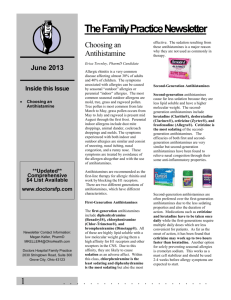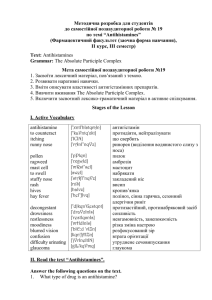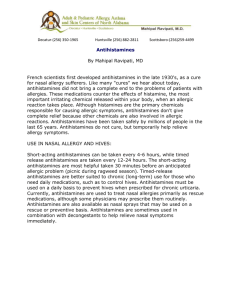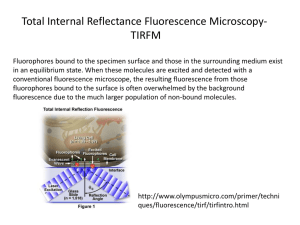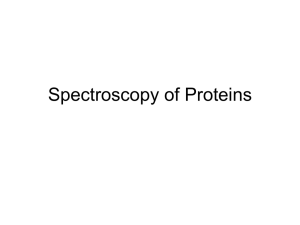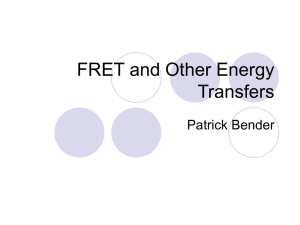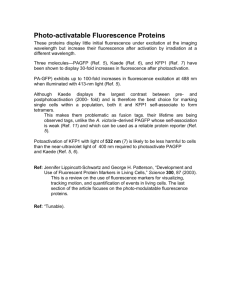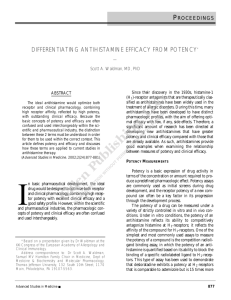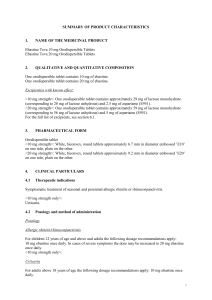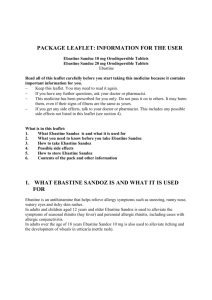J Fluoresc (2015) 25:1695–1709 DOI 10.1007/s10895-015-1656
advertisement
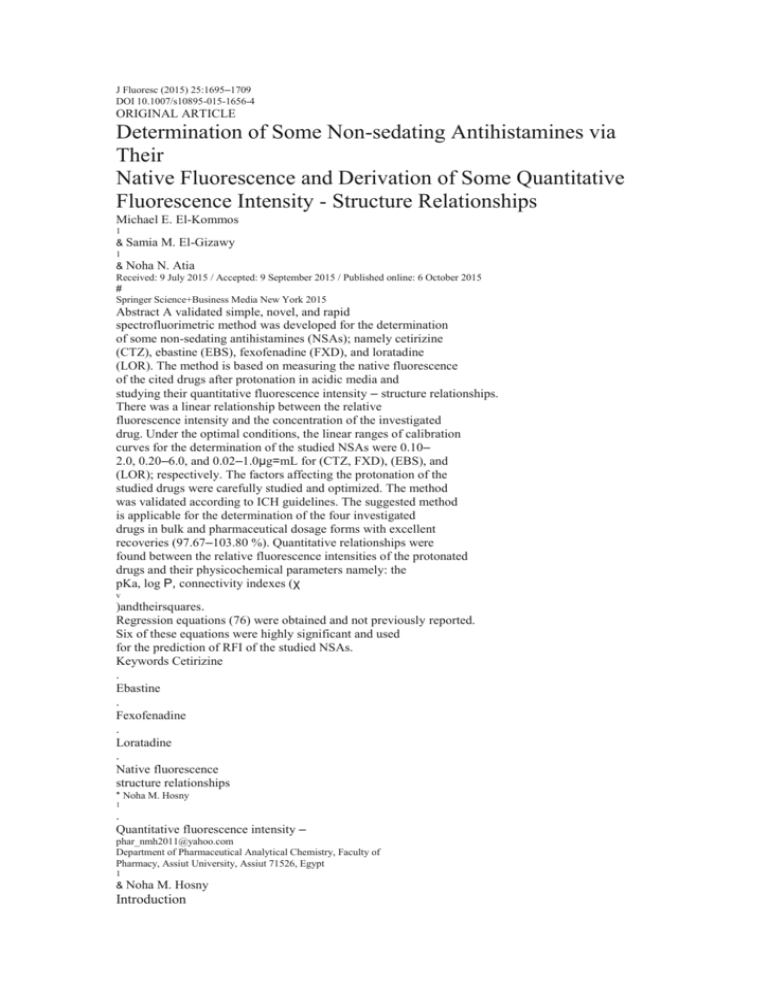
J Fluoresc (2015) 25:1695–1709 DOI 10.1007/s10895-015-1656-4 ORIGINAL ARTICLE Determination of Some Non-sedating Antihistamines via Their Native Fluorescence and Derivation of Some Quantitative Fluorescence Intensity - Structure Relationships Michael E. El-Kommos 1 & Samia M. El-Gizawy 1 & Noha N. Atia Received: 9 July 2015 / Accepted: 9 September 2015 / Published online: 6 October 2015 # Springer Science+Business Media New York 2015 Abstract A validated simple, novel, and rapid spectrofluorimetric method was developed for the determination of some non-sedating antihistamines (NSAs); namely cetirizine (CTZ), ebastine (EBS), fexofenadine (FXD), and loratadine (LOR). The method is based on measuring the native fluorescence of the cited drugs after protonation in acidic media and studying their quantitative fluorescence intensity – structure relationships. There was a linear relationship between the relative fluorescence intensity and the concentration of the investigated drug. Under the optimal conditions, the linear ranges of calibration curves for the determination of the studied NSAs were 0.10– 2.0, 0.20–6.0, and 0.02–1.0μg=mL for (CTZ, FXD), (EBS), and (LOR); respectively. The factors affecting the protonation of the studied drugs were carefully studied and optimized. The method was validated according to ICH guidelines. The suggested method is applicable for the determination of the four investigated drugs in bulk and pharmaceutical dosage forms with excellent recoveries (97.67–103.80 %). Quantitative relationships were found between the relative fluorescence intensities of the protonated drugs and their physicochemical parameters namely: the pKa, log P, connectivity indexes (χ v )andtheirsquares. Regression equations (76) were obtained and not previously reported. Six of these equations were highly significant and used for the prediction of RFI of the studied NSAs. Keywords Cetirizine . Ebastine . Fexofenadine . Loratadine . Native fluorescence structure relationships * Noha M. Hosny 1 . Quantitative fluorescence intensity – phar_nmh2011@yahoo.com Department of Pharmaceutical Analytical Chemistry, Faculty of Pharmacy, Assiut University, Assiut 71526, Egypt 1 & Noha M. Hosny Introduction 1 In 1937, the first H1 antihistamine (thymo-ethyl-diethylamine) was synthesized. However, because of its weak activity and high toxicity, this compound was not used [1]. Clinically useful H1 antihistamines such as phenbenzamine, pyrilamine, and diphenhydramine were introduced in the 1940s [2]. Currently, H1 antihistamines constitute the second most commonly used class of medications after antibiotics [3]. H1 antihistamines are traditionally classified into six groups, based on their chemical structure to alkylamines, monoethanolamines, ethylenediamines, phenothiazines, piperazines and piperidines. This classification is, however, of limited clinical relevance, and currently H1 antihistamines are classified as first, second and third generation [4]. The older first generation antihistamines are associated with troublesome sedative and antimuscarinic effects, and are often termed as ‘sedating antihistamines’. The newer generations of antihistamines, which are essentially devoid of these effects, are correspondingly termed as ‘non-sedating antihistamines’ (NSAs) [5]. NSAs are of potential value in the management of allergic rhinitis in which they relieve nasal and conjunctival itching, sneezing and rhinorrhoea. They are also useful in the treatment of acute and chronic urticaria [1]. NSAs down regulate the allergic inflammation directly by interfering with the histamine action at H1-receptors on sensory neurons and small blood vessels. They also decrease the antigen presentation, expression of proinflammatory cytokines and cell adhesion molecules, and chemotaxis. In a concentration-dependent manner, they inhibit mast cell activation and histamine release [5]. The investigated second generation non-sedating antihistamines are cetirizine (CTZ), Ebastine (EBS), loratadine (LOR) that are much more selective for peripheral H1 receptors. Fexofenadine (FXD) is the carboxylic acid metabolite of terfenadine, is one of third generation drugs. The chemical structures of the investigated drugs are given in (Fig. 1).

